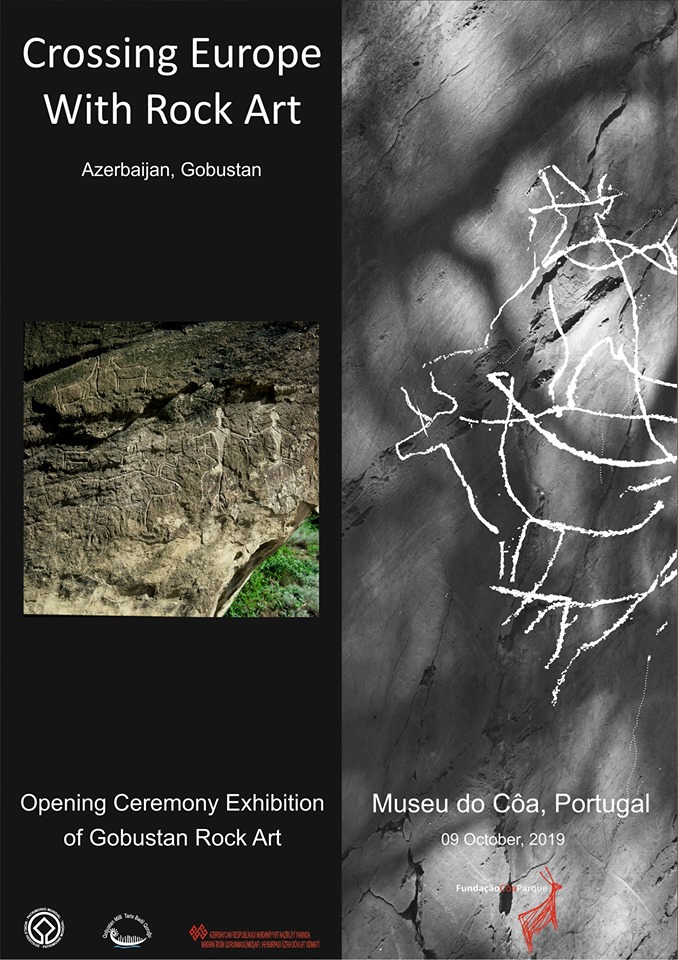After the Côa Valley Rock Art was presented in Azerbaijan, the Côa Museum now hosts an exhibition by the Gobustan National Historical-Artistic Preserve, again promoted within the Council of Europe Cultural Itinerary, the Prehistoric Rock Art Trails.
Gobustan Rock Art Cultural Landscape is located west of the Gobustan Raion, between the Qaradağ raion Districts, Baku Administrative Territory, 64 kilometers southwest of the Gobustan Raion. In 1966, the region was declared Azerbaijan’s national historic monument to ensure the preservation and conservation of ancient carvings, rocks, and caves with prehistoric inscriptions and hundreds of constantly active volcanoes. In 2007, the site was included in the UNESCO World Heritage list.
The Gobustan National Reserve is rich in archaeological records of human presence. The reserve already has over 6,000 individual rock art motifs, carved on hundreds of rocks that artistically reveal the continuing presence of human occupation, with engravings featuring humans, animals, battle pieces, ritual dances, bullfighting, rowboats, warriors with spears in their hands, camel caravans, images of the sun and stars, produced over 20,000 years (end of the last Ice Age – Upper Paleolithic – until the Middle Ages). Gobustan is the most popular national reserve in the country and also concentrates the richest mineral reserve of Azerbaijan (WIKIPEDIA).


